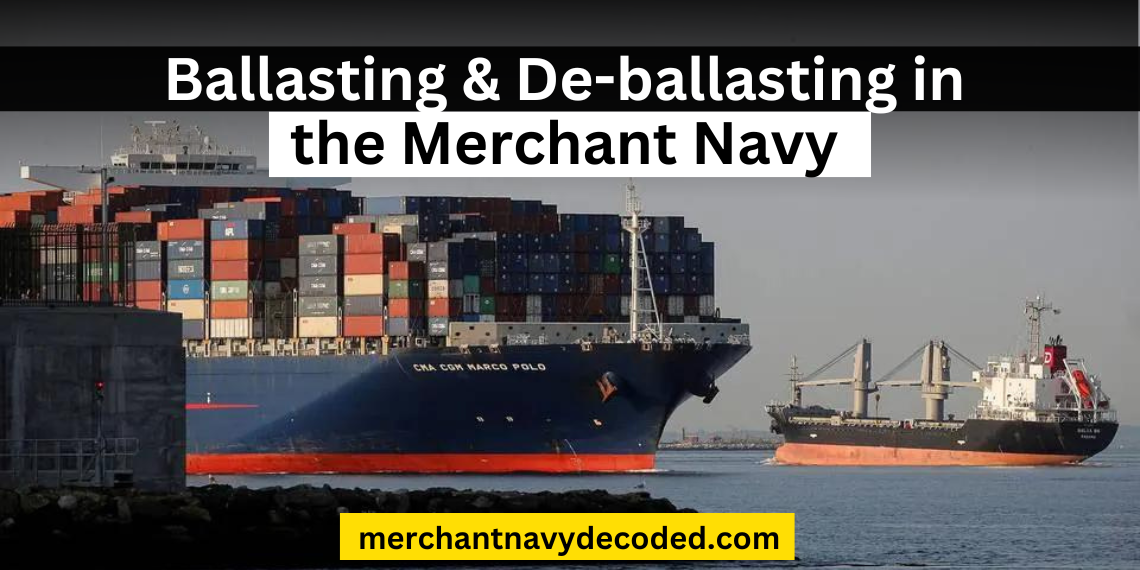What is Ballasting and De-ballasting? |A Complete Guide|
Understanding the Basics
Hey there, fellow sea enthusiast. Looks like you are ready to dive into another amazing session regarding different principles of Ships. If you have ever seen a Ship then a thing must have crossed your mind how these ships remain stable even in such choppy waters. Well, the short and simple answer is because of the Ballasting and de-ballasting operation. These operations involve adjusting the weight distribution of vessels, and structures to ensure stability, buoyancy, and safety.
But first, let’s talk about why Ballasting and De-ballasting operations are so important.
The Importance of Ballasting
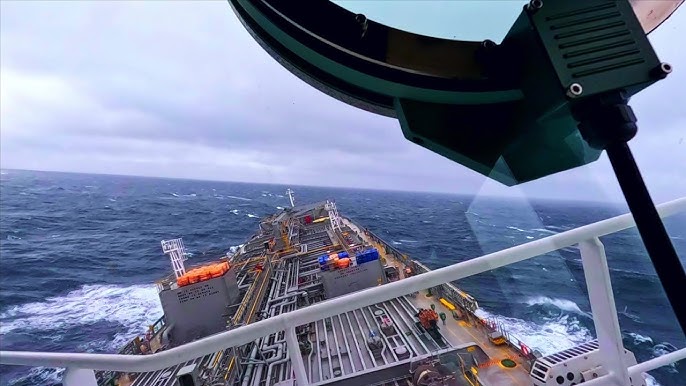
Ballasting is one of those things without which our ship would not be able to function properly. Whether or not the ship is at sea, ballast water is carried on all seagoing vessels big or small to maintain acceptable stability conditions. As ballast water is imperative to all types of ships. ‘re a ship captain navigating turbulent waters, a construction engineer working on a bridge, or involved in any industry that deals with heavy equipment, ballasting is essential for maintaining balance and stability. It can mean the difference between smooth operations and disaster.
So, now we know that ballasting and de-ballasting operations are crucial for:-
- To maintain stability.
- To steer in choppy waters.
- To get the desired movement, for instance,
- To reduce the stresses on the Ship’s hull.
How Ballasting Works
Ballasting relies on the principle of buoyancy. By adjusting the weight of a vessel or structure, you can control its draft and stability in water or land. When you take ballast water in designated ballast tanks. It stabilizes the whole ship by increasing its draft and ultimately makes it harder for waves to affect the motion of the ship. Ballasting involves filling special tanks with seawater to add weight to the ship’s hull, keeping it balanced and preventing it from tipping over. It’s like adding counterweights to a seesaw to keep it level.
To learn more about the Ballasting Operation and Treatment System:- CLICK HERE.
Types of Ballasting and De-ballasting Methods
There are different types of ballast systems for different types of ships onboard.
There are three types of Ballasting and De-ballasting Operations:
- Sequential
- Flow-through
- Dilution
Sequential Method
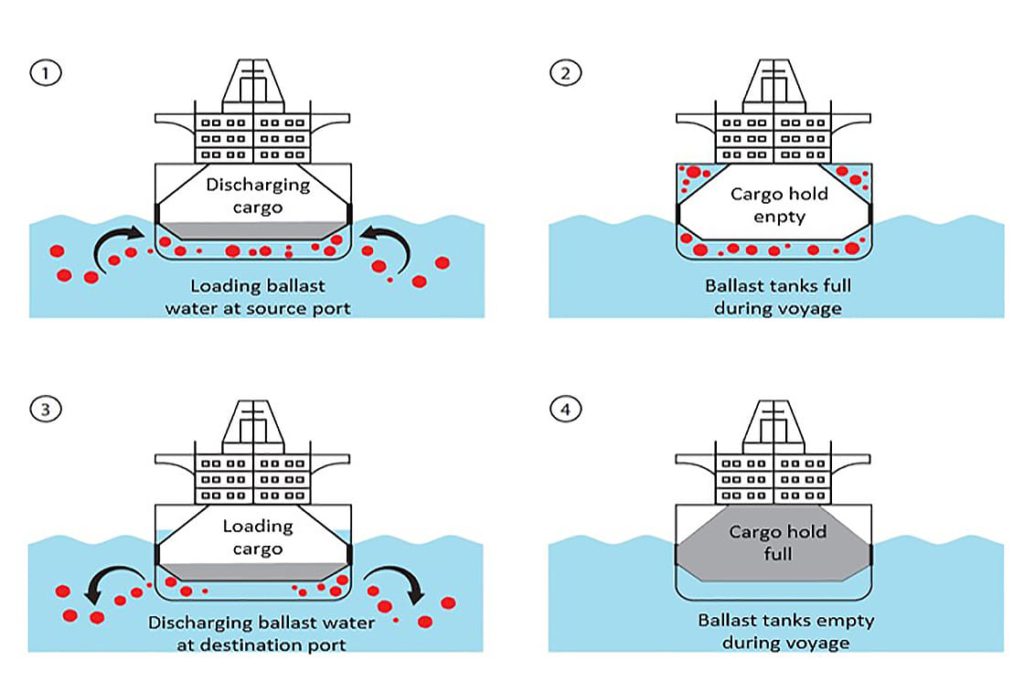
This method is the most basic of all three procedures. In this procedure, you have to
empty out all of the remaining water present in the ballast tanks. The main point here is to remove most of the water present in the tanks even if it means using the stripper pumps. After that fill the tanks with new ballast water to make at least 95% of volumetric exchange possible.
Flow-through Method
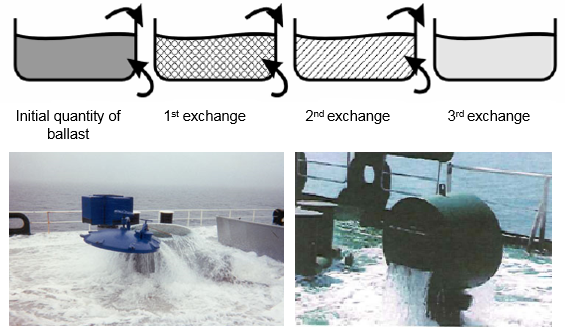
The flow-through is the method in which replacement ballast water is pumped to the desired tank and the water that is already inside the tank is allowed to flow out through overflow pipes or some other means. In this method, 98% of the volume must be exchanged. Pumping through three times the amount of ballast tanks shall be considered to meet the requirements.
Dilution Method
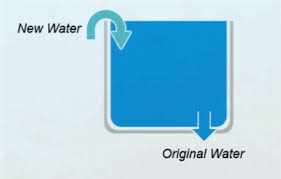
This method requires pumping the water into the tank and pumping out the water that is already inside the tank simultaneously. In this method, we fill replacement ballast water through the top of the ballast tank while simultaneously discharging from the bottom of the tank at the same flow rate, and we maintain a constant level in the tank throughout the ballasting procedure. In this method, we pump at least three times the tank volume through the tank.
Mainly, 2 pumps are used together in this method:- One is a suction pump like a centrifugal pump and the other is a filling pump.
There are various types of pumps about which you can learn by clicking on this blog:-
Key Components of Ballasting & De-Ballasting
Ballast Tanks
Ballast tanks are at the heart of any ballasting system. These containers hold the ballast material, and their design and functionality play a pivotal role in the ballasting process. Ballast tanks are situated at different parts of the ship to reduce the stresses onboard the ship due to movements like rolling or pitching.
Pumps and Valves
Efficient ballasting requires precision, and that’s where pumps and valves come in. They control the flow of ballast material, ensuring accurate weight distribution. Pumps are used to transfer seawater in or out of the ballast tanks, while valves control the flow of water through the pipelines. Apart from that, pumps are also used to circulate the ballast water or any other fluid to different parts of the ship.
Safety Measures in Ballasting
Preventing Over-Ballasting
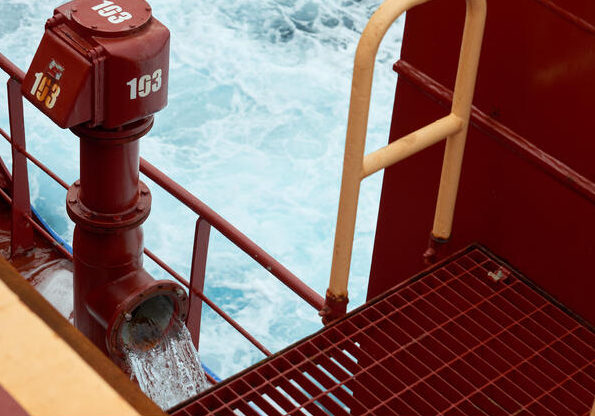
Over-ballasting can lead to disastrous consequences. It’s crucial to understand how to prevent this scenario and ensure the safety of vessels and structures.
There are certain ways through which you can identify if there is over-ballasting or not :
- Know your Ship’s Capacity: Everyone C/O must know about the particulars of the ship. So that C/O can perform the ballasting operation according to the capacity of the ballast tanks.
- Take reference from the Loading Manual: Every ship has a specific loading manual. It informs about the draft, the required quantity of ballast, and which method to use.
- Regularly monitor the draft of the Ship: Keep a constant watch on the draft of your ship during ballasting. If the draft of the ship exceeds the safe limit during ballasting then it should be the case of over ballasting.
Environmental Impact of Ballasting and De-ballasting
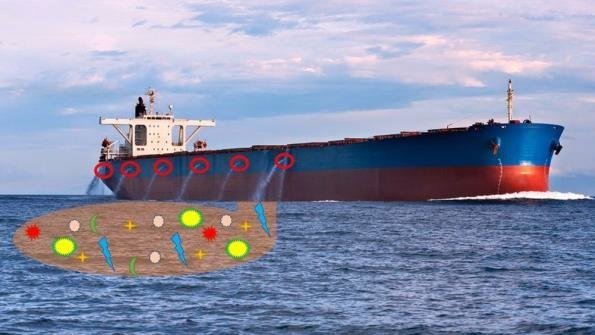
Ballasting, specifically the discharge of ballast water from ships, can have significant environmental impacts. The main environmental concerns associated with ballasting are:
- Spreading of Invasive Species: One of the most significant environmental concerns is the introduction of invasive species into new ecosystems. When ships take in ballast water from one location and discharge it into another, they can transport non-native aquatic species, such as plants, animals, and microorganisms. These invasive species can disrupt native ecosystems
- Water Quality and Pollution: Ballast water often contains pollutants, including oil residues, heavy metals, and pathogens. When discharged into a new environment, these pollutants can contaminate water quality and harm aquatic life.
- Disease Transmission: Ballast water may contain harmful pathogens and diseases that can be transferred to native species. For instance, Cholera.
For more information regarding the spread of disease CLICK HERE
Ballast Water Management
After all these problems we required a solution because we couldn’t stop the ships from taking ballast as the major part of their stability is due to ballasting. But we can manage this ballast water by setting some specific norms regarding ballasting and de-ballasting procedures. This is what ballast water management is all about.
Conclusion
In conclusion, ballasting and de-ballasting are fundamental operations that keep ships sailing safely on an even keel. Generally, people overlook this process. However, it keeps the vessel stable and allows the seafarer to work without worrying about the ship’s movement. You can learn many things in detail regarding ballasting operation and many other things in our Ballast Water Treatment Package. So, next time you see any ship just remind yourself about the engineering marvels working inside those towering giants.
Disclaimer :- The opinions expressed in this article belong solely to the author and may not necessarily reflect those of Merchant Navy Decoded. We cannot guarantee the accuracy of the information provided and disclaim any responsibility for it. Data and visuals used are sourced from publicly available information and may not be authenticated by any regulatory body. Reviews and comments appearing on our blogs represent the opinions of individuals and do not necessarily reflect the views of Merchant Navy Decoded. We are not responsible for any loss or damage resulting from reliance on these reviews or comments.
Reproduction, copying, sharing, or use of the article or images in any form is strictly prohibited without prior permission from both the author and Merchant Navy Decoded.


